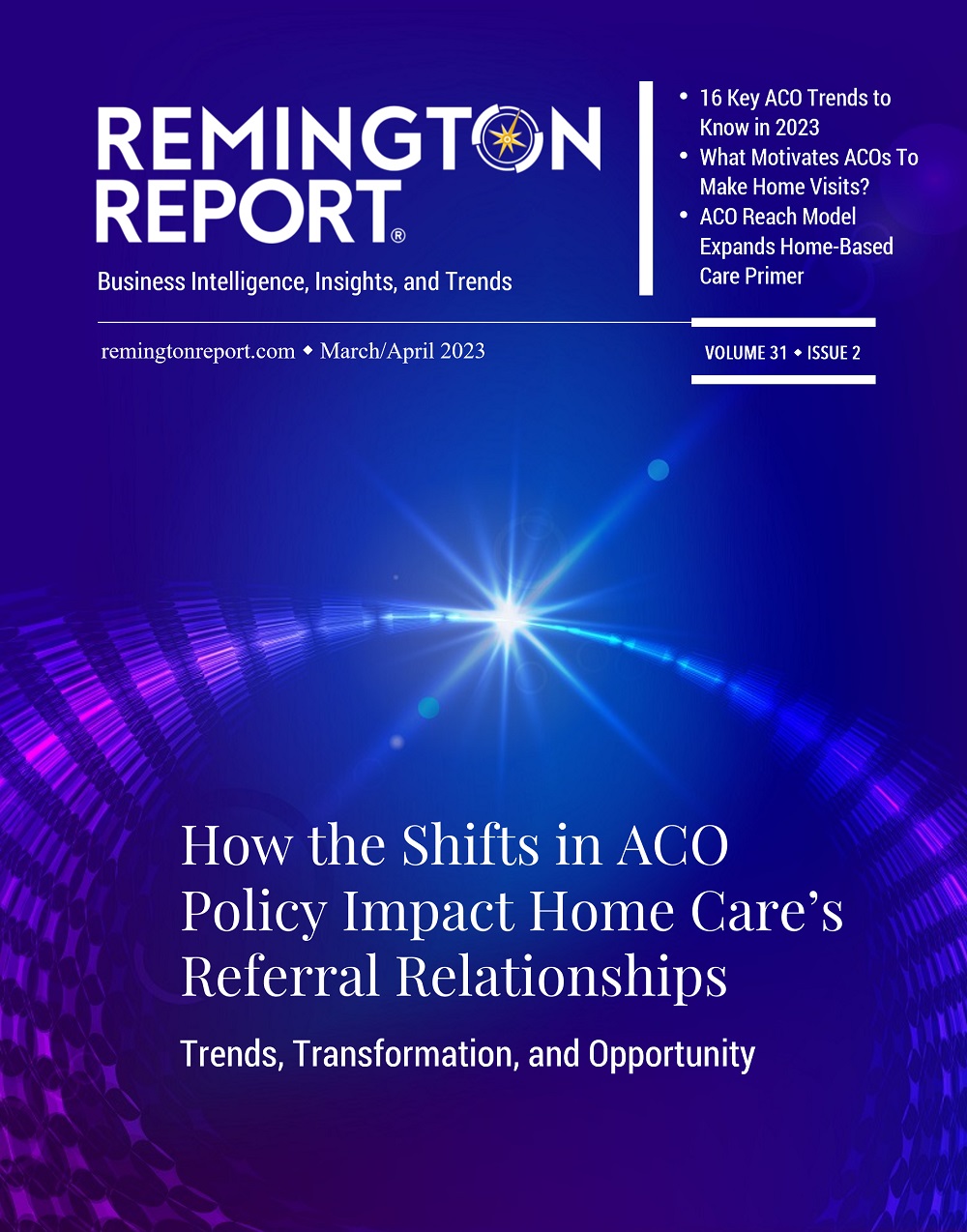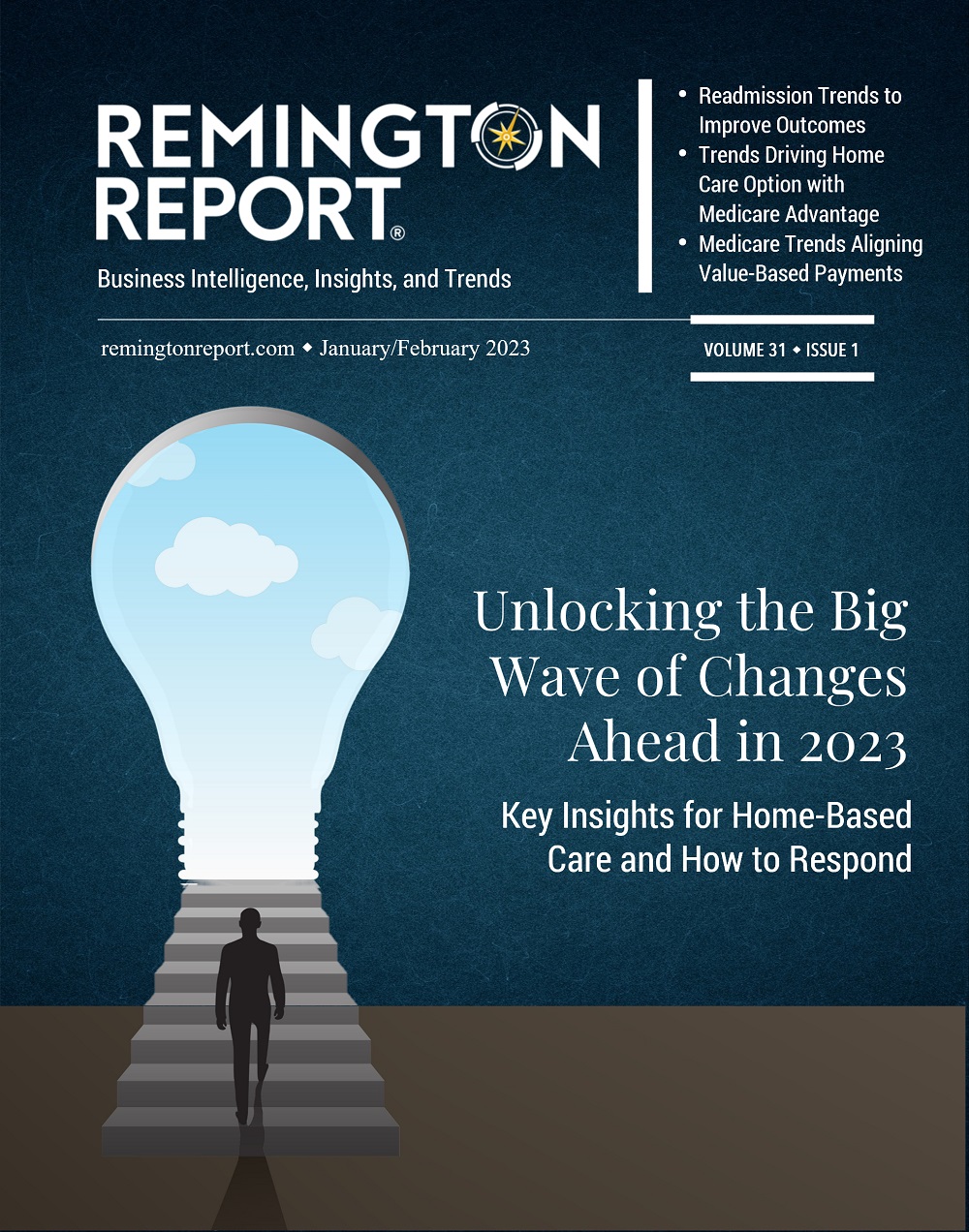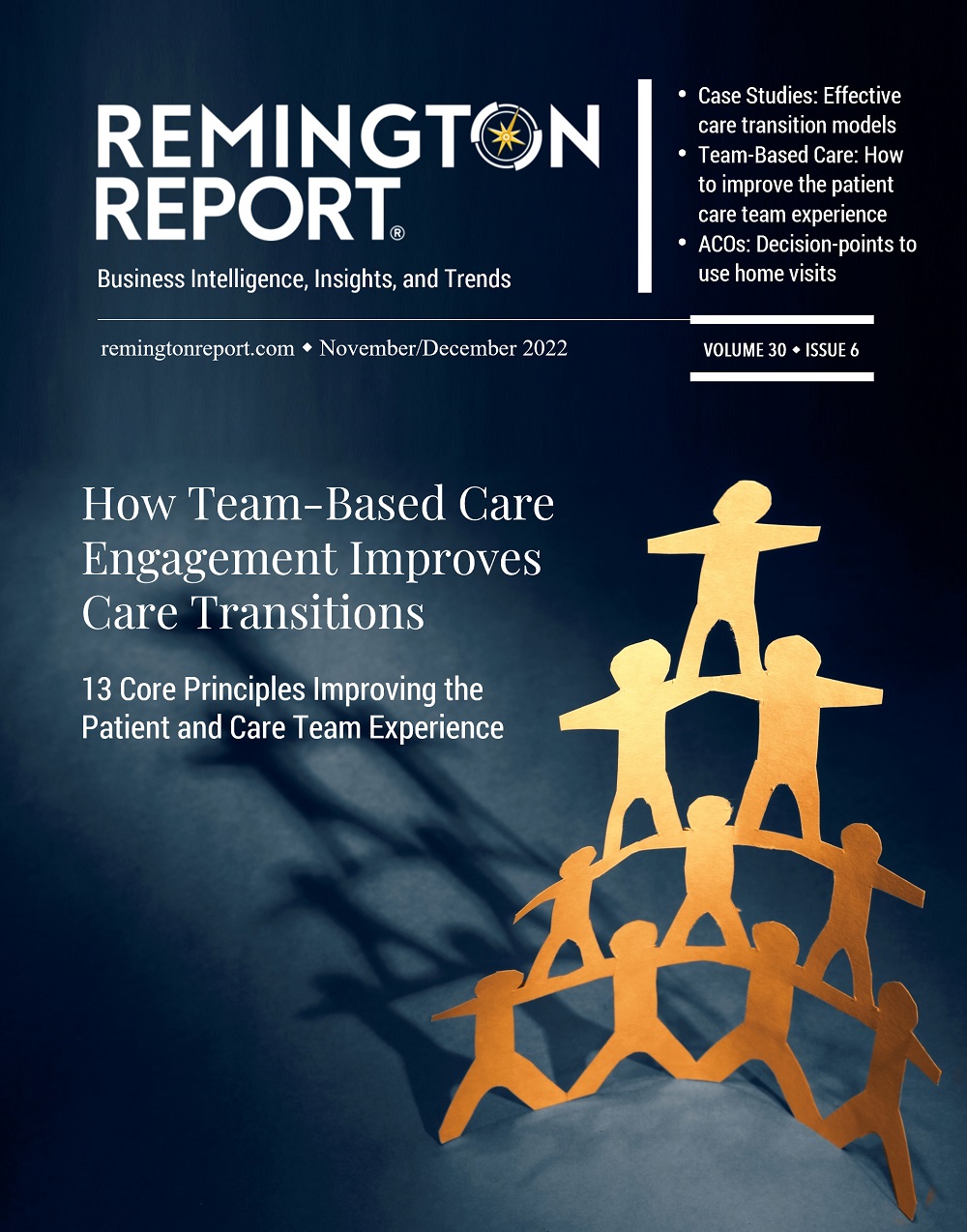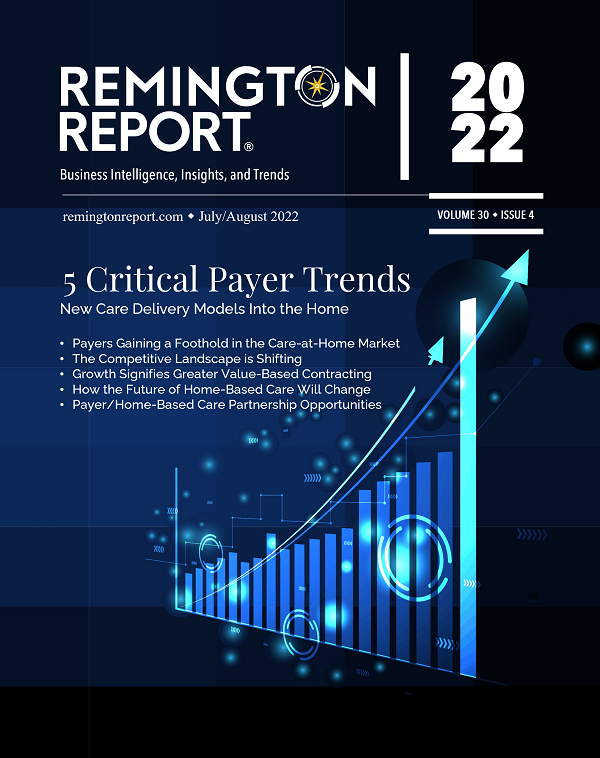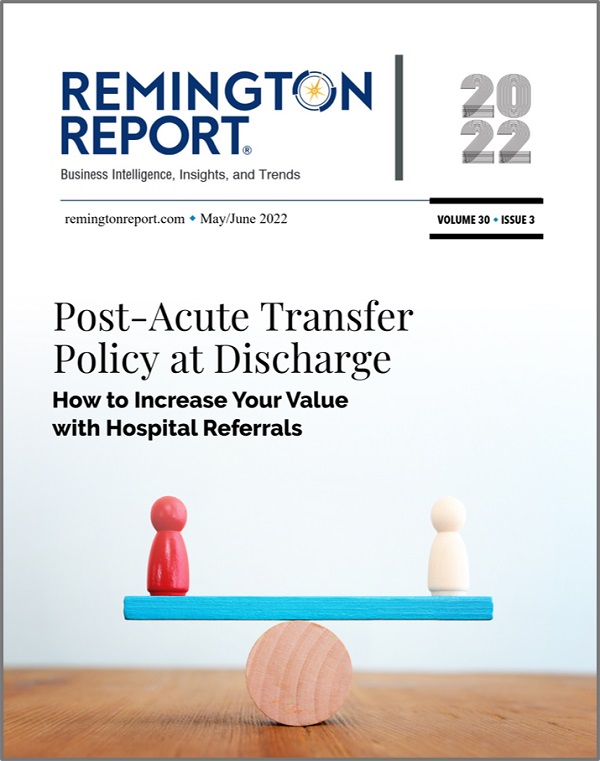Emerging trends in physician payment models are addressing the management of the high-need, seriously ill patient populations, and a care continuum model to place patients in the right care setting based upon their readiness.
Under the new CMS initiative, called the Primary Cares Initiative, Medicare will be rewarding practices for providing more convenient access to care, and start paying for chronic disease care management, acute care in-home services, and hospice and palliative care. To review the initiative go to:
How can you organization evaluate your readiness to respond to new physician payment models? How can your organization participate with physicians? The Remington Report provides insights for your organization.
1. Identify practices that can participate.
Eligible practitioners are those in internal medicine, general medicine, geriatric medicine, family medicine, and/or hospice and palliative medicine.
They must:
- Be located in one of the selected 26 regions PCF regions;*
- Include primary care practitioners (MD, DO, CNS, NP, and PA), certified in internal medicine, general medicine, geriatric medicine, family medicine, and hospice and palliative medicine;
- Provide primary care to at least 125 attributed Medicare beneficiaries at a particular location;
- Have primary care services account for at least 70% of the practices’ collective billing based on revenue. If the practice has multiple specialties, 70% of the practice’s eligible primary care practitioners’ combined revenue must come from primary care services;
- Have experience with value-based payment arrangements or payments based on cost, quality, and/or utilization performance;
- Use 2015 Edition Certified Electronic Health Record Technology (CEHRT);
- Attest on the application to advanced primary care delivery capabilities;
- Be able to meet the requirements of the Primary Care First Participation Agreement.
* These regions are: Alaska (statewide), Arkansas (statewide), California (statewide), Colorado (statewide), Delaware (statewide), Florida (statewide), Greater Buffalo region (New York), Greater Kansas City region (Kansas and Missouri), Greater Philadelphia region (Pennsylvania), Hawaii (statewide), Louisiana (statewide), Maine (statewide), Massachusetts (statewide), Michigan (statewide), Montana (statewide), Nebraska (statewide), New Hampshire (statewide), New Jersey (statewide), North Dakota (statewide), North Hudson-Capital region (New York), Ohio and Northern Kentucky region (statewide in Ohio and partial state in Kentucky), Oklahoma (statewide), Oregon (statewide), Rhode Island (statewide), Tennessee (statewide), and Virginia (statewide).
2. Align financial and quality measures.
The two models are designed to encourage improvement on quality metrics, and lower costs. CMS will assess quality of care based on a focused set of measures that are clinically meaningful for patients with complex, chronic needs and the serious illness population. Measures include a patient experience of care survey, controlling high blood pressure, diabetes hemoglobin A1c poor control, colorectal cancer screening, and advance care planning.
3. Be prepared to go at-risk.
Participation lets practices receive a bonus of up to 50% of Medicare revenue with a downside risk of 10%, if patients stay healthy and out of the hospital. Models are designed for small practices and provide a monthly, flat revenue stream for each patient.
4. Develop robust chronic care management programs.
The crux of the two models focus on chronic care management and high-risk, high-need beneficiaries. Seamless integrated chronic care infrastructures are important and should be positioned as high-performing networks, or preferred providers.
5. Enhance relationships with hospitalists.
Through the PCF payment model options, high need patients with serious illness who do not have a primary care practitioner or care coordination and indicate an interest in receiving care from a practice participating in the model will be assigned to a model participant.
6. Create community-based partnerships.
Practices must demonstrate they have a network of relationships with other care organizations in the community to ensure that beneficiaries can access the care best suited to their longer-term needs.
7. Close any gaps in care coordination programs.
Practices will be responsible for care coordination ensuring that care is coordinated and that SIP patients are clinically stabilized.
8. Focus on readmissions and ED programs.
Physician payment options test whether delivery of advanced primary care can reduce total cost of care and are accountable for patient outcomes. Practices will be incentivized to deliver patient-centered care that reduces acute hospital utilization.
9. Invest in technology.
Remote monitoring, wearables, and virtual health visit capabilities are changing the future to allow for greater care in the home, reduced costs, and seamless care management.
10. Focus on patient engagement strategies.
Patient engagement is a quality measures under these models.

Lisa Remington is widely recognized as one of the foremost futurists in the home care industry, focusing on healthcare trends and disruptive innovation. She serves as the president and publisher of the Remington Report magazine and is also the President of Remington’s Think Tank Strategy Institute. Lisa provides strategic advice and education to over 10,000 organizations, assisting them in developing transformative strategies for growth and their future implications. She closely monitors complex trends and forces of change to develop effective strategic approaches.



